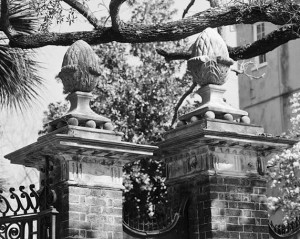Considerations
If you would like to purchase a historic property, whether an urban estate or a country plantation, several considerations will weigh into your decision.
Historic Districts and the Board of Architectural Review
If you plan to buy a home in downtown Charleston, keep in mind that much of the area has been designated by the National Park Service as a National Landmark District. The historic districts on the peninsula include the French Quarter District, the Hampton Park Terrace Historic District, the Old and Historic District and the Old City District. You can view maps of Charleston County historic districts here.
Purchasing a property in a historic district means any exterior alterations, new construction (including additions and interior renovations) and demolitions are subject to approval by Board of Architectural Review. More information on requirements can be found by contacting the City of Charleston Department of Design, Development and Preservation.
Preservation Easements
Some homes on the peninsula are protected by interior and exterior preservation easements, which are legal agreements that restrict future alterations to and uses of some structures. It’s important to know if a home you are considering purchasing is subject to such an easement, as this could restrict your plans to enlarge the master bathroom or convert the home into a bed and breakfast. On the other side, if the home you purchase does not have an easement but qualifies for one, you could receive a generous federal tax deduction by protecting the home through a preservation easement — although this could restrict the future pool of buyers for the home if you decide to sell it down the road.
Older Infrastructure and Higher Upkeep Costs
The price tags of historic homes are not cheap, and neither is their upkeep after the initial purchase. The Medway Plantation is said to take $500,000 in upkeep funds each year. Obviously, larger properties will have larger utility bills, but historic homes also have older infrastructure, such as electrical wiring and plumbing. If you’re lucky, you can find homes in which the past owners have completely updated these things, but some homes have a patchwork menagerie of wiring and plumbing.
Termite companies typically offer two types of termite insurance: repair bonds, which cover the cost of repairing termite damage if it occurs, and service bonds, which only cover the extermination of termites if they are found, but do not repair related damage. Full-coverage termite bonds are sometimes difficult to procure for older homes because of everything from past damage to inaccessible crawlspace areas that cannot be inspected. We have heard stories of historic homes with cisterns not qualifying for a repair bond because the cistern under the house cannot be properly inspected for termite problems.
Conservation Easements
For country plantations with thousands of acres, conservation easements may be an issue. Similar to preservation easements and often perpetual, conservation easements limit an owner’s ability to add new structures to a property and can prohibit commercial uses of the property. Purchasing a property with a conservation easement can limit your use of the property and your ability to make alterations as well as diminishing the pool of potential buyers. Yet, if you purchase a large, historic property and donate it as a conservation easement, you could recognize a significant federal tax break.
If Selling
If you are planning to sell a multimillion-dollar historic property, keep in mind that they usually take much longer to sell than a modestly priced, more conventional property. Finding the right buyer for a 6,000-acre estate can be a challenge even in a strong real estate market. They are out there, but it takes time — typically several years. And if conservation or preservation easements are in place, finding a potential buyer could take even longer. Medway Plantation, which is protected under a conservation easement, was on the market for eight years before the right buyer was found.
Conclusion
Do you own a historic property? Was it pristine when you bought it, or did you renovate? Please share the joys and challenges of historic homeownership with us. We’d love to hear about your property and give readers more insight into owning a centuries-old masterpiece.
